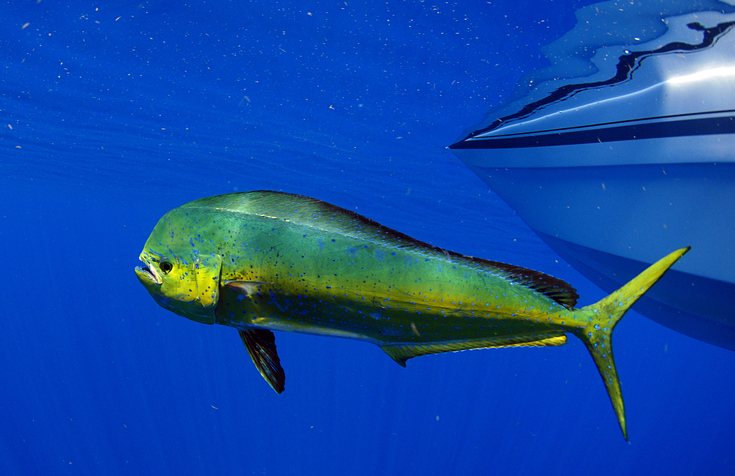What Is Mahi-Mahi?
If you're at all a fan of quality seafood, you've most likely eaten mahi-mahi. There's even a good chance you may have ordered it under a totally different name, and not even realized it. It's a fish of many names, and even more culinary uses, but what exactly is mahi-mahi?
The word mahi-mahi comes from the Hawaiian name for the fish, meaning "strong strong." With a name like that, you can guess that it has outrun more than a few fishing boats in its time. A powerful fish, mahi mahi quickly and deftly swims through all the warm waters of the world, from the Caribbean to the Pacific Ocean. They sport an array of colors — bright blues, greens, and yellows, making them especially popular trophies for game fishermen.
While the name is derived from a Polynesian language, mahi-mahi is the term usually used for the fish in the United States, even though many mahi-mahi are caught in the Atlantic Ocean. The reasoning behind this seems to come from mahi-mahi's actual English name, the common dolphinfish. In order to avoid confusion with the mammal of the same name, and to alleviate fear that you might be eating Flipper, most restaurants and seafood vendors will refer to it as mahi-mahi. It's also known as dorado in some countries, meaning "golden" in Spanish.
Apart from being a beautiful fish to hang on your wall, mahi-mahi has become very prevalent in seafood restaurants for its versatility. A deep-water fish adapted for fast swimming, the mahi-mahi has firm white flesh but a very mild flavor. These factors allow you to make almost any dish imaginable with mahi-mahi at home; it's hearty enough to be grilled to perfection, but if you wanted to go in the opposite direction, you can even have it ceviche-style. You can sear it with salt, pepper, and lime or glaze it with citrus and lemongrass. It's perfect for fish tacos, too.
Far from being a hazard to its namesake mamal, mahi-mahi is commonly used in today's restaurants largely due to sustainability concerns. Currently, the National Oceanic and Atmospheric Administration reports that mahi-mahi are not being overfished, and can spawn and grow rapidly, which keeps their population stable. Authorities have also enacted regulations on the amount that are allowed to be fished and harvested in the Atlantic, allowing the mahi-mahi to thrive. Sustainable seafood is a concern for many people, especially when other popular fish such as grouper and Chilean sea bass are heavily overfished, so mahi-mahi is an excellent choice when considering what to purchase for dinner.
Like a golden bullet streaking through the waves, the mahi-mahi is a remarkable fish and an amazing sight to see when fishing. Now readily available at fish markets, it's easy to purchase a fillet and cook it almost any way you can think of. Give it a try next time you're at your local fishmonger. It'll be delicious no matter what you call it, and it's one of the most eco-friendly things you can buy at the grocery store.

